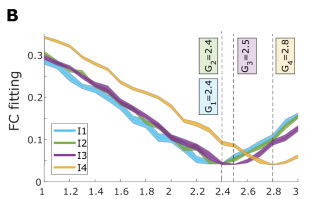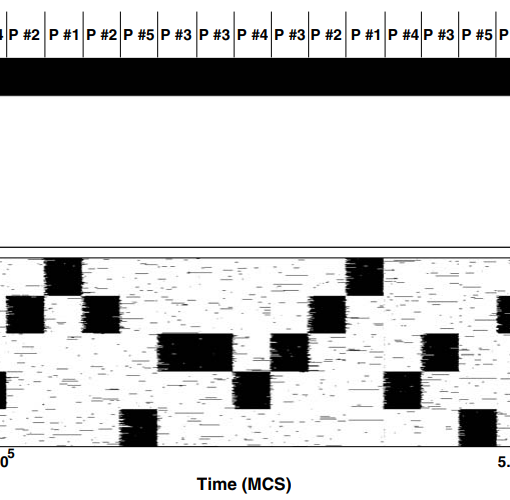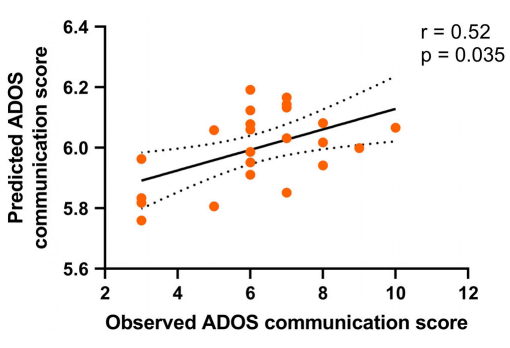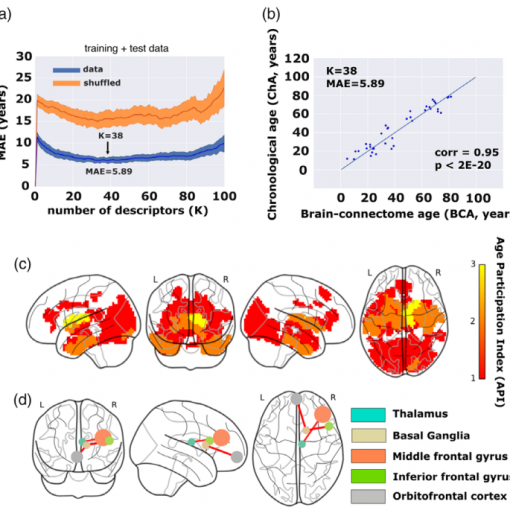Marilyn Gatica Briceño, Fernando E. Rosas, Pedro A.M. Mediano, Ibai Diez, Stephan P. Swinnen, Patricio Orio, Rodrigo Cofre, Jesus M. Cortes. HIGH-ORDER INTERACTIONS IN AGING EXPLAINED THROUGH CHANGES IN THE CONNECTOME IN A WHOLE-BRAIN MODEL. OHBM 2022 – Organization for Human Brain Mapping [pdf]
Introduction:
Previous studies of functional connectivity along the lifespan during resting state have shown that regions within the default mode network (DMN) become less functionally connected with age [3]. Furthermore, recent investigations on high-order functional interactions have shown the predominance of redundant interdependencies in older adults, consistently across scales [6] and particularly relevant for the DMN [1].
Despite these considerable advances in understanding how the anatomical and functional connectivity change along the lifespan, the relationship between changes in brain structure and function leading to age-related decline remains largely unknown. To bridge this important gap, we sought to investigate how age-related changes in brain structure affect its function.
Methods:
We built a neurobiologically-realistic whole-brain computational model using both anatomical and functional MRI data from 161 participants ranging from 10 to 80 years old. In particular, we use the Dynamic Mean Field (DMF) model [8], which is an emerging powerful tool to investigate the neurobiological mechanisms that underlie macroscale neural phenomena [2,4,5]. The DMF is calibrated by optimising a free parameter, denoted by G. Moreover, the connectivity between two different nodes is given by the structural connectivity matrix (SC). Following the methodology put forward in [7], our analysis focuses on two types of qualitatively distinct high order interactions which are critical in our approach: synergy and redundancy. In particular, the sign of the O-information serves to discriminate between redundant and synergistic groups of random variables: positive corresponds to redundancy-dominated interdependencies, while negative value characterizes synergy-dominated variables.
Results:
To study the effect of ageing on brain dynamics, we used functional data from different participants divided into four age groups, similar to our previous work: I1 (N1=28, age 10-20 years), I2 (N2=46, 20-40 years), I3 (N_3=29, 40-60 years) and I4 (N4=58, 60-80 years). One DMF model was built for each age group, using the average SC within each group (Fig. 1A) Next, each model was calibrated separately, resulting in one G value per group (Fig. 1B). We computed the O-information for all the subsets of brain regions of size 3 to 20. The DMF model reproduced the age differences in redundancy and synergy reported in [6] (Fig. 1C). Then, we asked whether varying the SC of the young population was sufficient to reproduce the high-order functional aspects in the older participants. We then studied the relationship between the weights of SC from the youngest group I1 and the corresponding weights from the oldest group I4 through a parabolic fitting (Fig. 2A). Next, the fitted polynomial was used to simulate the effects of ageing in each of the young participants belonging to I1, thus resulting in an “aged” version of their connectomes (Fig. 2B). Each of these synthetic aged connectomes was used to run a set of simulations showing that the synthetically simulated aged participants also reproduced the functional changes observed empirically (Fig. 2C).
Conclusions:
The DMF model successfully reproduced the increased redundancy-dominated interdependencies of BOLD activity across brain areas in the older participants, and across all interaction orders, in full agreement with recent observations. Furthermore, we provided evidence that these high-order functional changes are driven by localised non-lineal processes of neurodegeneration in the connectome.
Whole-brain models have enhanced our understanding of the brain across different conditions, and therefore provide a highly promising avenue of research in the field of ageing neuroscience. In this context, our work constitutes the first step towards mechanistic explanations on how functional high-order interdependencies in the human brain are affected by the age-connnectome degeneration.
References
1. Camino-Pontes (2018) “Interaction Information Along Lifespan of the Resting Brain Dynamics Reveals a Major Redundant Role of the Default Mode Network” Entropy, 742.
2. Cofré R. (2020) “Whole-Brain Models to Explore Altered States of Consciousness from the Bottom Up” Brain Sci., vol 10, Issue 9, pp. 626
3. Damoiseaux J.S. (2008) “Reduced resting-state brain activity in the “default network” in normal aging” Cereb Cortex, vol 18, Issue 8, pp. 1856-64
4. Deco G. (2014) “Great Expectations: Using Whole-Brain Computational Connectomics for Understanding Neuropsychiatric Disorders” Neuron, vol 84, Issue 5, pp. 892-905
5. Deco G. (2018) “Whole-Brain Multimodal Neuroimaging Model Using Serotonin Receptor Maps Explains Non-linear Functional Effects of LSD”, vol 28, Issue 19, pp.3065-3074
6. Gatica M. (2021) “High-order interdependencies in the aging brain” Brain Connectivity, vol 11, Issue 9, pp. 734-744
7. Rosas F. (2019) “Quantifying High-order Interdependencies via Multivariate Extensions of the Mutual Information” Phys. Rev. E, 100, 032305
8. Wong (2006) K. F. “A recurrent network mechanism of time integration in perceptual decisions” J Neurosci., vol 26, Issue 4, pp. 1314–1328





